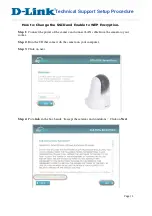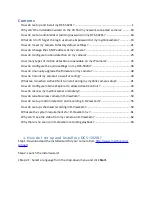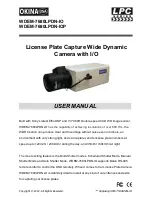
V1.02
Thom Hogan’s Complete Guide to the Nikon D300
Page 706
taking a meter reading. One source is likely to dominate,
and that should usually be the one you use as your base
white balance setting.
• Can you overpower the lighting?
A strong flash comes in
handy in mixed lighting situations, as you can often make
your flash the primary light source (at least if your subject
is less than 20 feet (~6m) away. In this case, make flash
your white balance setting. Your subject will look correct,
but the background may now look very wrong because
it’s lit by another light source (incandescent would
produce orange backgrounds, fluorescent an obnoxious
blue green). That’s one reason why most location
photographers use multiple light setups. They either turn
off the background lighting or they overpower it. With
multi-flash TTL now possible, I tend towards turning off
the source lighting and using my own, if possible. Three
SB-800’s and the internal flash can light a pretty large area
plus subject.
• Will a filter balance errant color?
If the problem is a mix of
flash and fluorescent, or even incandescent and
fluorescent, the primary problem is the fluorescent light.
Try using an FLD filter (or a 30M), as the primary problem
with most fluorescents is going to show up as too much
magenta. With mercury vapor in the mix, you want to cut
out red, so a 30R should be tried. (Anything more than 30
units of filtration starts to become a major problem with
the other light sources; indeed, I’d probably try 10M or
10R first.) Many professional photographers carry filter
gels for their flash—essentially they try to filter the flash
that they
add
color to the scene to match that of the
existing light so that a
Preset manual
white balance
works better.
If you’ve got an SB-600 or SB-800, you can get a mini
filter set for the flash that helps. In this case, you set white
balance for the ambient lighting and then pick an
appropriate filter for the flash head so that it (nearly)














































